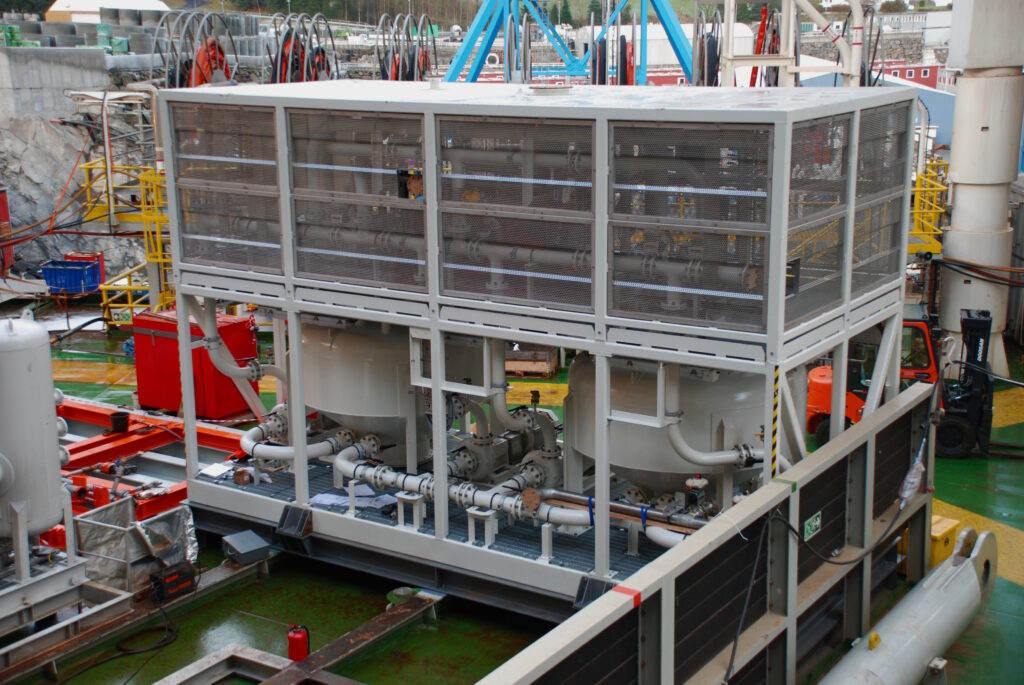Drill cuttings reinjection (DCRI) is an advanced waste management technique that has gained significant traction in the offshore oil and gas industry as a sustainable and efficient alternative to conventional disposal methods. Drill cuttings, which are the fragmented pieces of rock generated during drilling operations, have traditionally been disposed of through methods such as offshore discharge, onshore landfill, or thermal treatment. However, these conventional methods pose environmental, logistical, and regulatory challenges. DCRI, on the other hand, offers a range of advantages that make it a preferred choice for managing drill cuttings in offshore operations.
Environmental Advantages
One of the most significant advantages of drill cuttings reinjection is its reduced environmental impact compared to conventional disposal methods. Offshore discharge of drill cuttings, which involves releasing them into the ocean, can have detrimental effects on marine ecosystems. The cuttings often contain drilling fluids, which may include toxic chemicals and heavy metals that can harm marine life and disrupt aquatic habitats. Even when cuttings are treated to reduce their toxicity, the sheer volume of discharged material can lead to sedimentation and smothering of benthic organisms.
Onshore disposal methods, such as landfill or thermal treatment, also have environmental drawbacks. Landfilling requires significant land area and can lead to soil and groundwater contamination if not properly managed. Thermal treatment, while effective in reducing the volume of cuttings, generates greenhouse gas emissions and requires substantial energy input, contributing to climate change.
Drill cuttings reinjection addresses these environmental concerns by reinjecting the cuttings back into subsurface formations, effectively isolating them from the environment. This process eliminates the risk of marine pollution, reduces the need for landfilling, and minimizes greenhouse gas emissions. By securely containing the cuttings within geological formations, DCRI ensures that they do not interact with surface ecosystems or water resources, making it a more environmentally sustainable option.
Operational Advantages
From an operational perspective, drill cuttings reinjection offers several advantages over conventional disposal methods. One of the key benefits is the reduction in logistical complexity. Offshore discharge and onshore disposal require the transportation of cuttings from the drilling site to the disposal location, which can be logistically challenging and costly, especially in remote offshore environments. DCRI eliminates the need for transportation by reinjecting the cuttings directly at the drilling site, streamlining the waste management process and reducing the associated costs and risks.
Another operational advantage is the ability to handle a wide range of drilling waste, including cuttings, drilling fluids, and other waste streams. DCRI systems are designed to process and reinject these materials simultaneously, reducing the need for separate treatment and disposal processes. This integrated approach enhances operational efficiency and reduces the overall footprint of waste management activities on the drilling platform.
DCRI also provides greater flexibility in managing waste volumes. Offshore drilling operations can generate large quantities of cuttings, particularly in deepwater or extended-reach wells. Conventional disposal methods may struggle to handle these volumes, leading to storage and disposal bottlenecks. DCRI, however, can accommodate varying waste volumes by adjusting the injection rate and pressure, ensuring continuous and efficient waste management throughout the drilling operation.

Regulatory and Social Advantages
Drill cuttings reinjection aligns with the increasing regulatory and social pressures to adopt sustainable and environmentally responsible practices in the oil and gas industry. Regulatory bodies worldwide are imposing stricter controls on waste disposal, particularly in sensitive marine environments. DCRI provides a compliant solution that meets these regulatory requirements, reducing the risk of legal challenges and enhancing the operator’s reputation.
From a social perspective, DCRI demonstrates a commitment to environmental protection and sustainability, which is increasingly important to stakeholders, including investors, communities, and non-governmental organizations. By adopting DCRI, operators can enhance their social license to operate, fostering positive relationships with stakeholders and contributing to the long-term sustainability of the industry.
Technical and Safety Advantages
Drill cuttings reinjection also offers technical and safety advantages over conventional disposal methods. The process involves grinding the cuttings into a fine slurry, which is then injected into subsurface formations under high pressure. This ensures that the cuttings are securely contained within the geological formation, reducing the risk of surface spills or leaks. The injection process is closely monitored and controlled, with real-time data on pressure, flow rate, and volume, ensuring safe and efficient operation.
Moreover, DCRI reduces the risk of accidents associated with transportation and handling of cuttings. Conventional disposal methods involve multiple handling steps, including loading, transportation, and unloading, which can pose safety risks to personnel. By reinjecting the cuttings on-site, DCRI minimizes these handling steps, enhancing overall safety on the drilling platform.
Conclusion
Drill cuttings reinjection represents a significant advancement in waste management for the offshore oil and gas industry, offering a range of advantages over conventional disposal methods. Its environmental benefits, including reduced marine pollution and greenhouse gas emissions, make it a more sustainable option. Operationally, DCRI simplifies waste management, enhances efficiency, and provides flexibility in handling varying waste volumes. Economically, it offers long-term cost savings, regulatory compliance, and potential revenue generation. Additionally, DCRI aligns with regulatory and social expectations, demonstrating a commitment to environmental stewardship and sustainability. From a technical and safety perspective, it ensures secure containment of cuttings and reduces the risk of accidents. By adopting drill cuttings reinjection, operators can achieve a more efficient, cost-effective, and environmentally responsible approach to managing drilling waste, contributing to the long-term success and sustainability of offshore operations.
